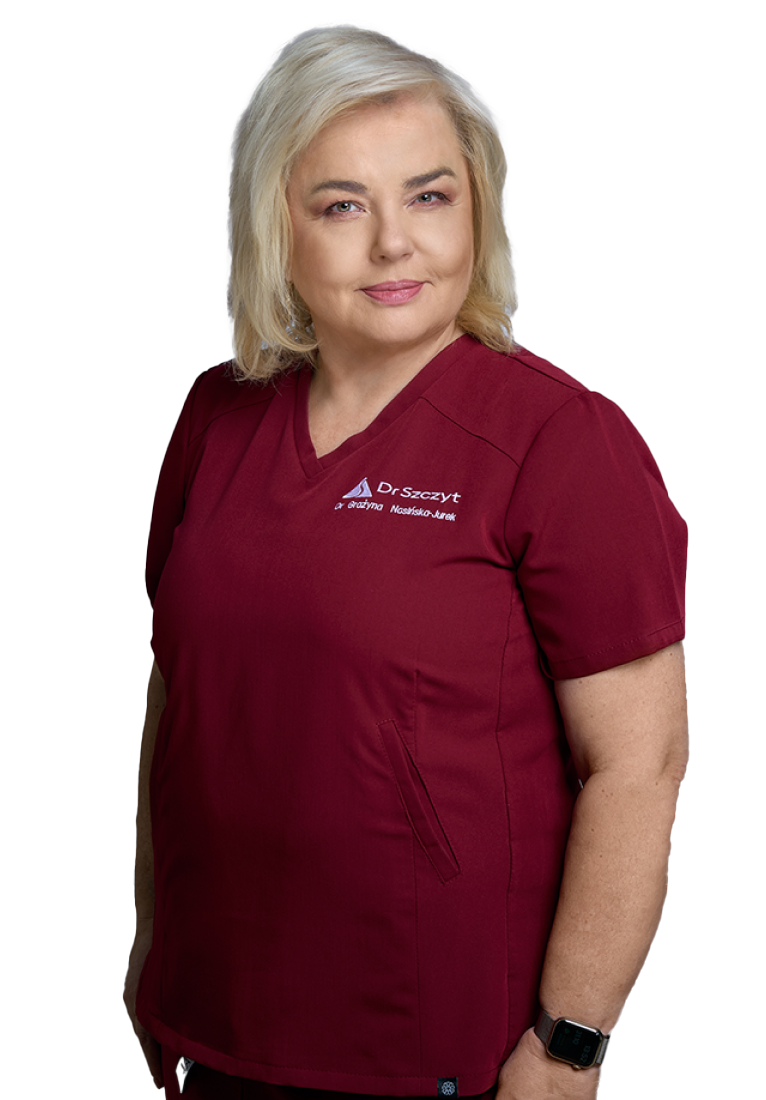
What is chin correction and how does the procedure proceed?
Chin correction is a plastic surgery procedure that restores facial proportions by properly shaping the lower part of the face. The procedure may involve advancing, retracting, raising, lowering or moving the chin, as well as filling it with an implant in the case of a receding chin. The correction is especially recommended for people with congenital facial asymmetries, visible chin disproportions, as well as patients who have undergone a nose job, which has accentuated existing disproportions in this part of the face.
The procedure itself involves cutting through the bone tissue of the chin and moving it to the desired position. In the case of implants, the surgeon places the prosthesis in the chin area, precisely adjusting its shape and size to the patient's individual needs. If necessary, the procedure can be expanded to include liposuction of the submandibular region, allowing for a more defined jawline and a slimmer looking neck.
The procedure is performed under general anesthesia and takes 1 to 2 hours. After the surgery, the chin is immobilized, and the patient receives sutures and a dressing to protect the surgical site. The patient remains under hospital care for 24 hours to monitor their health. After 7 days, the patient should return to the clinic for suture removal and dressing change.
Chin correction is a procedure that produces lasting and visible results, improving facial symmetry and giving the face a more harmonious and attractive appearance. Thanks to the use of modern surgical techniques and precise customization, the results are natural and long-lasting.
How to prepare for the procedure?
The preparation process begins with a detailed consultation with a plastic surgeon, during which facial proportions are assessed, expectations are discussed, and details of the procedure, potential risks and effects of the surgery are presented. Before the operation, the patient must perform a set of laboratory tests (blood count, coagulation system, glucose levels and other tests ordered by the doctor). The results allow us to assess your general health and make sure there are no contraindications to general anesthesia and the surgical procedure itself.
Approximately 14 days before the procedure, you should stop taking medications that affect blood clotting. About 4 weeks before your visit to the clinic, reduce alcohol consumption and avoid smoking, as these can negatively affect the wound healing process. It is also important to ensure adequate hydration and a balanced diet, which support tissue regeneration.
On the day of surgery, the patient should be fasting, as recommended by the surgeon. You should also wear comfortable, loose-fitting clothing that does not need to be worn over the head to avoid possible discomfort after surgery. It's also a good idea to arrange for return transportation before the scheduled procedure, and to ensure a restful environment during the first days of recovery.
Recovery after chin correction
Recovery after chin correction requires patience and adherence to medical recommendations to ensure proper healing and optimal results. After the procedure, the patient spends the first night in the hospital, where their health is monitored by the medical team. Immediately after the surgery, swelling, bruising, and discomfort may occur in the chin and jaw area, which are natural reactions of the body to surgical intervention.
Sutures and dressings are usually removed after about seven days. For the first few days, the patient should avoid intense physical activity, excessive facial expressions and situations that could affect the stability of the chin, such as bending over or carrying heavy objects. A diet consisting of soft or liquid foods should also be adhered to in order to avoid excessive strain on the operated area.
Swelling and bruising gradually subside over 2-3 weeks, and the full effects of the procedure can be assessed after about 2-3 months, when the tissues have fully recovered. During this time, it is advisable to avoid sun exposure and use creams with high UV filters to protect the skin from irritation.
In rare cases, complications can occur, such as infections, displacement of the chin or problems with wound healing, so the patient should make regular follow-up appointments and contact the doctor immediately if there are any worrisome symptoms.
Contraindications to performing chin correction
Chin correction, although a safe procedure, cannot be performed in people with unregulated chronic diseases such as hypertension or diabetes, and in patients with blood clotting disorders. Active infections or inflammation in the face and mouth, such as gingivitis or tooth decay, are also contraindications and must be treated before surgery. The procedure is not recommended for pregnant or breastfeeding women, as well as those with autoimmune diseases that can complicate the healing process. The patient's overall health is also important - those who are weakened or in poor physical condition may have difficulty recovering from surgery. An important part of qualification is also the patient's realistic attitude toward the results of the procedure and acceptance of the possibility of minor asymmetries or scarring.
Important information
Duration of treatment
ca. 60 minutes
Required tests
blood group, blood count, coagulation indices (APTT and INR), creatinine, glucose level, electrolytes (Na, K), general urine test, hepatitis B vaccination, ECG
Anesthesia
general
Stay at the clinic
1 day
Recovery
14-21 days
Removal of sutures
on day 7
Changing dressings
when the sutures are removed
Contraindications
Vascular diathesis, coagulation disorders, unregulated hypertension, unregulated diabetes, purulent infection of the skin and mucous membranes, pregnancy
Pre-treatment recommendations
Price list
Type of treatment
Price from
Price to
Shortening the chin
12 000 PLN
15 000 PLN
Chin implant
11 000 PLN
13 000 PLN

Dr. Grażyna Nasińska-Jurek
Plastic surgeon


















